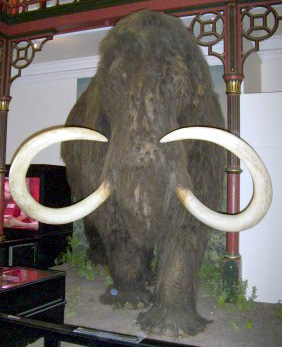Bacteria pick up mammoth DNA
Bacteria can readily pick up and use fragments of DNA they find laying around, including old mammoth genes, scientists have  announced.
announced.
While it's been known for decades that bacteria can acquire genetic material from their environment, researchers had assumed that this occurred mostly in the form of genes passed on in pristine condition from other microbes.
Now University of Copenhagen scientist Eske Willerslev and his colleagues, writing in PNAS, have shown that microbes can promiscuously pick up and use even ancient chemically-damaged DNA, including mammoth gene sequences from a 43,000 year old bone!
The team worked with a soil-dwelling bug called Acinetobacter baylyi; they began by exposing cultures of the bacterium to DNA sequences ranging in length from just a short string of genetic letters to more than 50,000.
All of the different sequence lengths, they found, were picked up and utilised by the bugs, although the likelihood of this happening was lower the shorter the DNA sequence.
Next they tried the same experiment using chemically-damaged DNA, which contains the genetic equivalent of spelling mistakes, to simulate the condition of genetic material naturally encountered by bacteria in the environment.
Again, the bugs did not appear choosy and incorporated the added sequences into their own genetic make-up.
Finally, in a real test of the likelihood that bacteria might be able to pick up genes from anything in the environment, and even ancient genes that might have been dormant for millenia, they extracted DNA from a large 43,000 year old mammoth bone and added it to a culture of Acinetobacter baylyi.
Afterwards, one isolate of the bugs tested positive for mammoth mitochondrial DNA sequences, proving that authentic ancient DNA can naturally recombine in the genomes of modern bacteria.
This process, the researchers speculate, might hint at a mechanism used by primitive life to exchange genes before more complex sexual reproduction strategies had evolved.
Moreover, it means that modern microbes also have at their disposal a means to "bring back to life" long since dead genetic sequences.
This is important, the team say, since, globally, rivers alone are estimated to discharge 14,500 tons of sedimentary DNA each year, all of which may be capturable by gene-hungry bacteria that could use the sequences to develop resistance to antibiotics.
With this in mind, keeping a closer eye on what happens to DNA dumped in the healthcare setting, where materials are sterilised by the DNA is left intact, might be warranted...
References
- Previous Cell stiffness signals cancer
- Next Remembering Fred Sanger





Comments
Add a comment